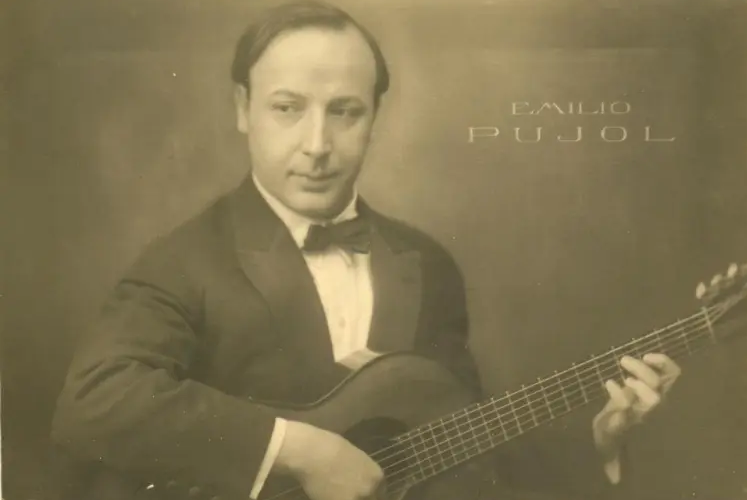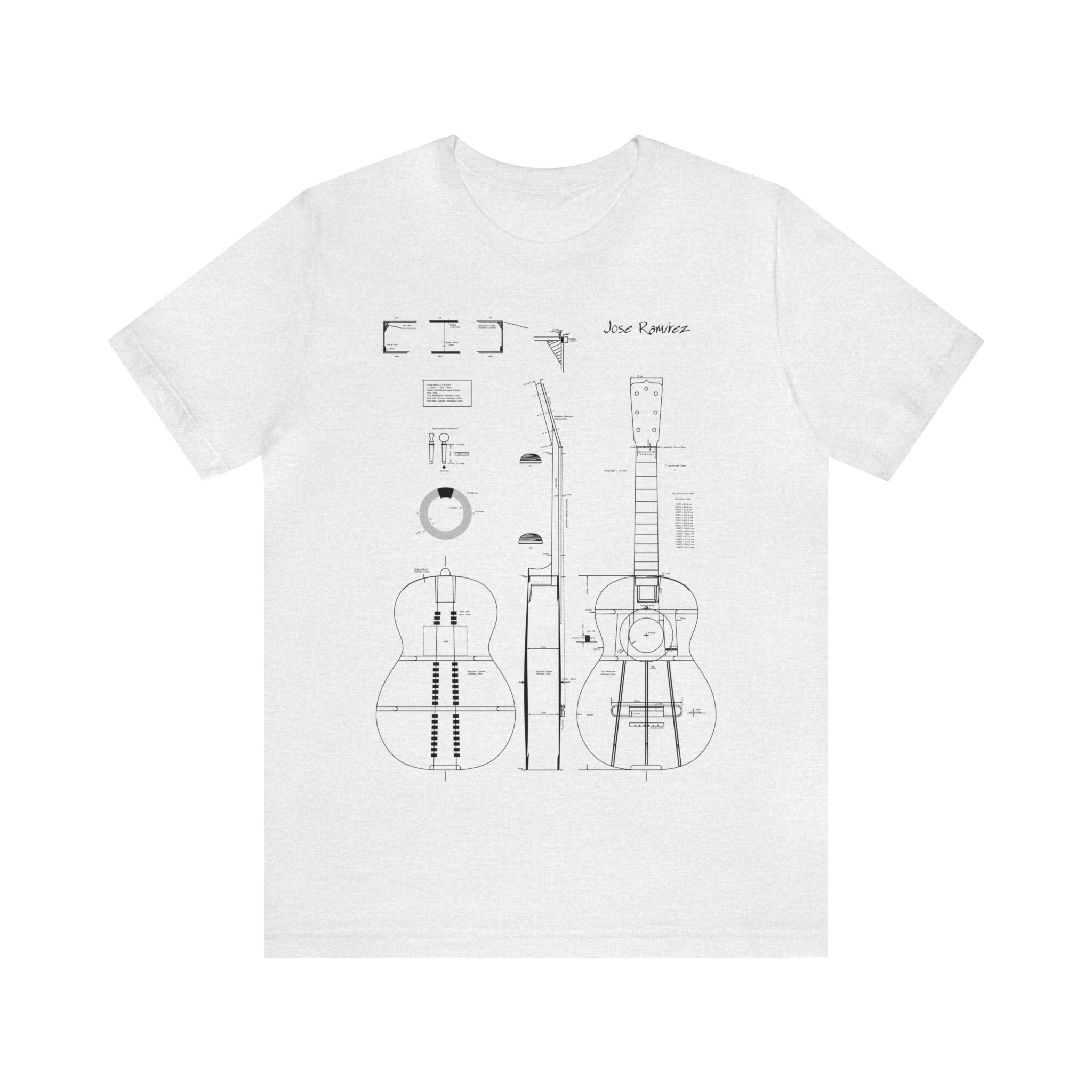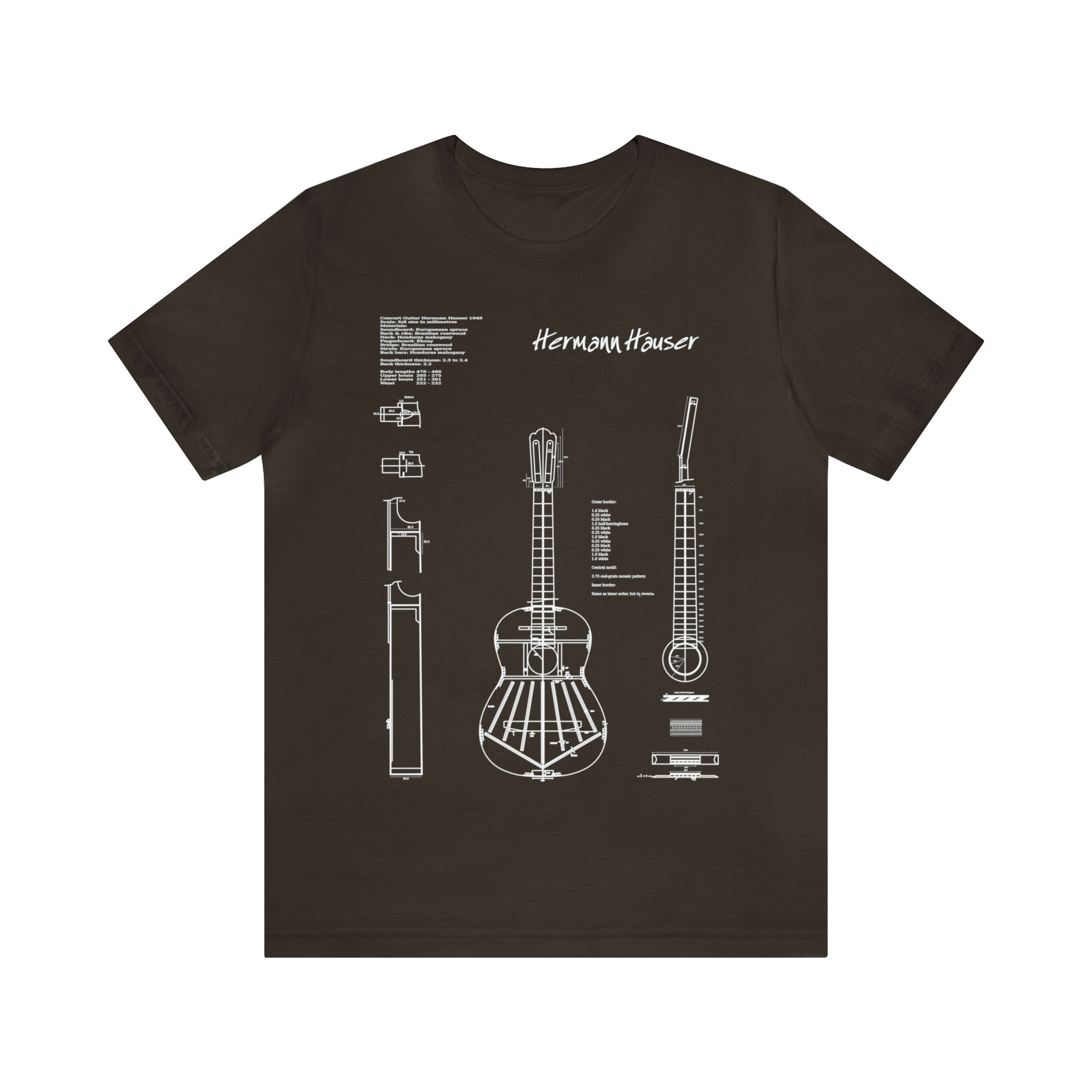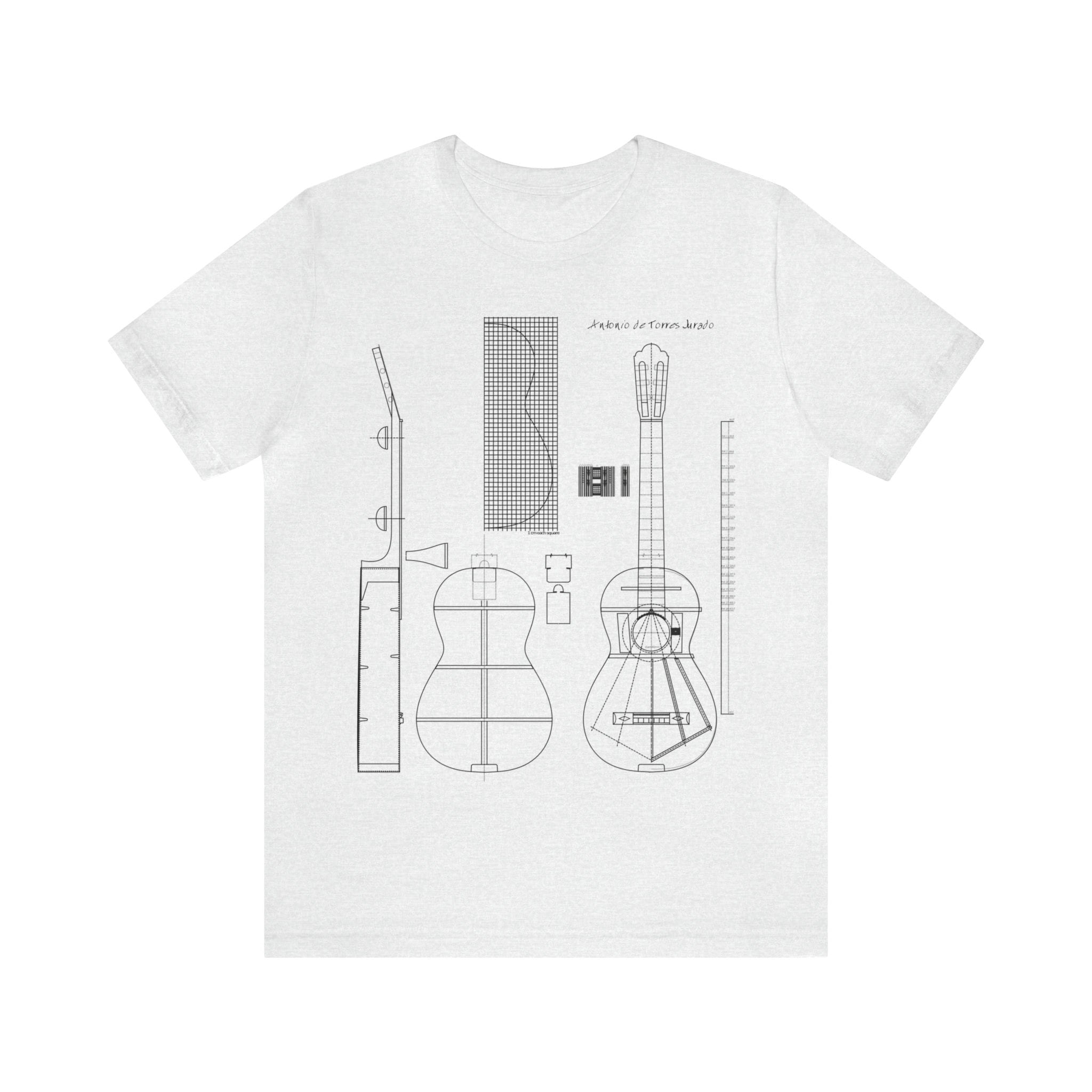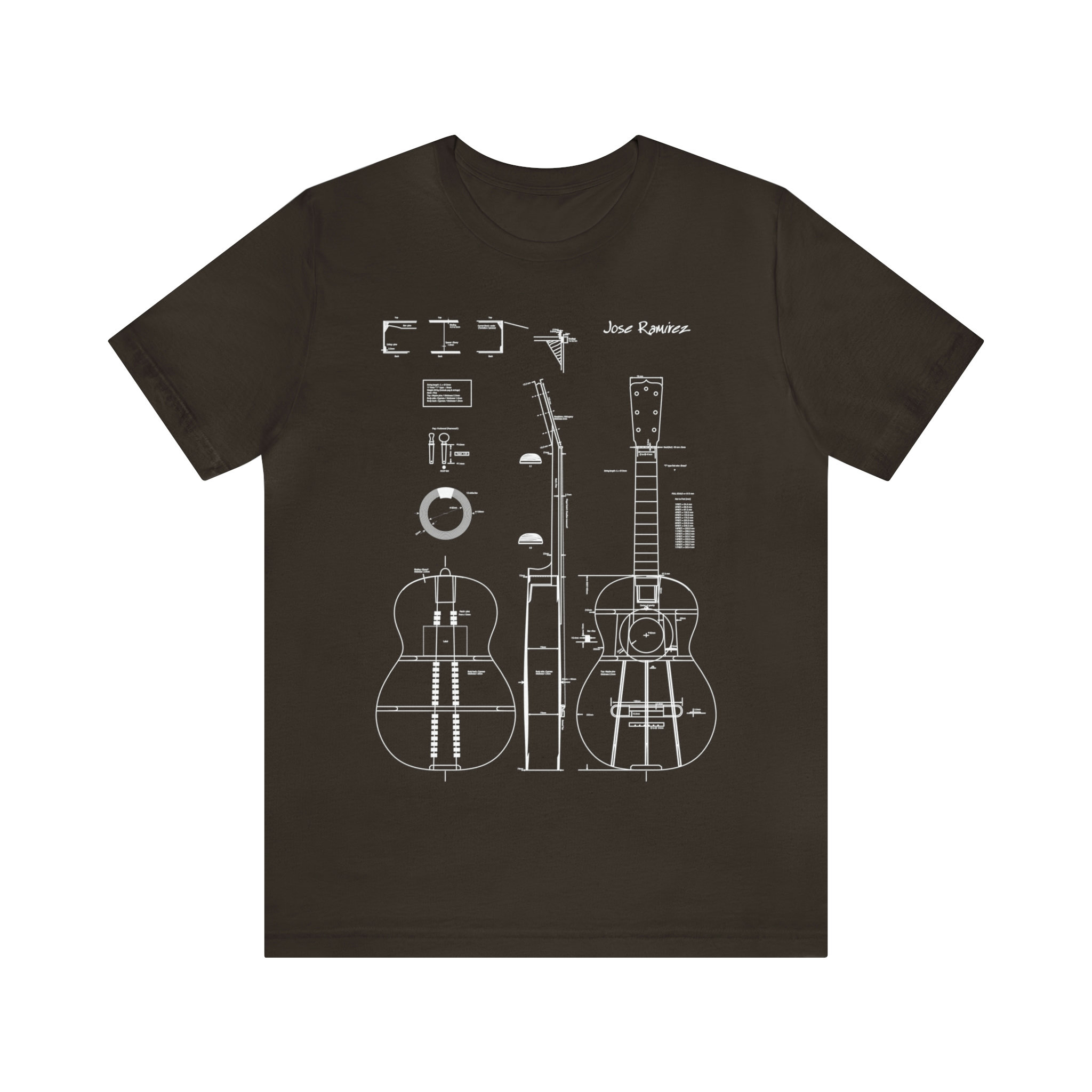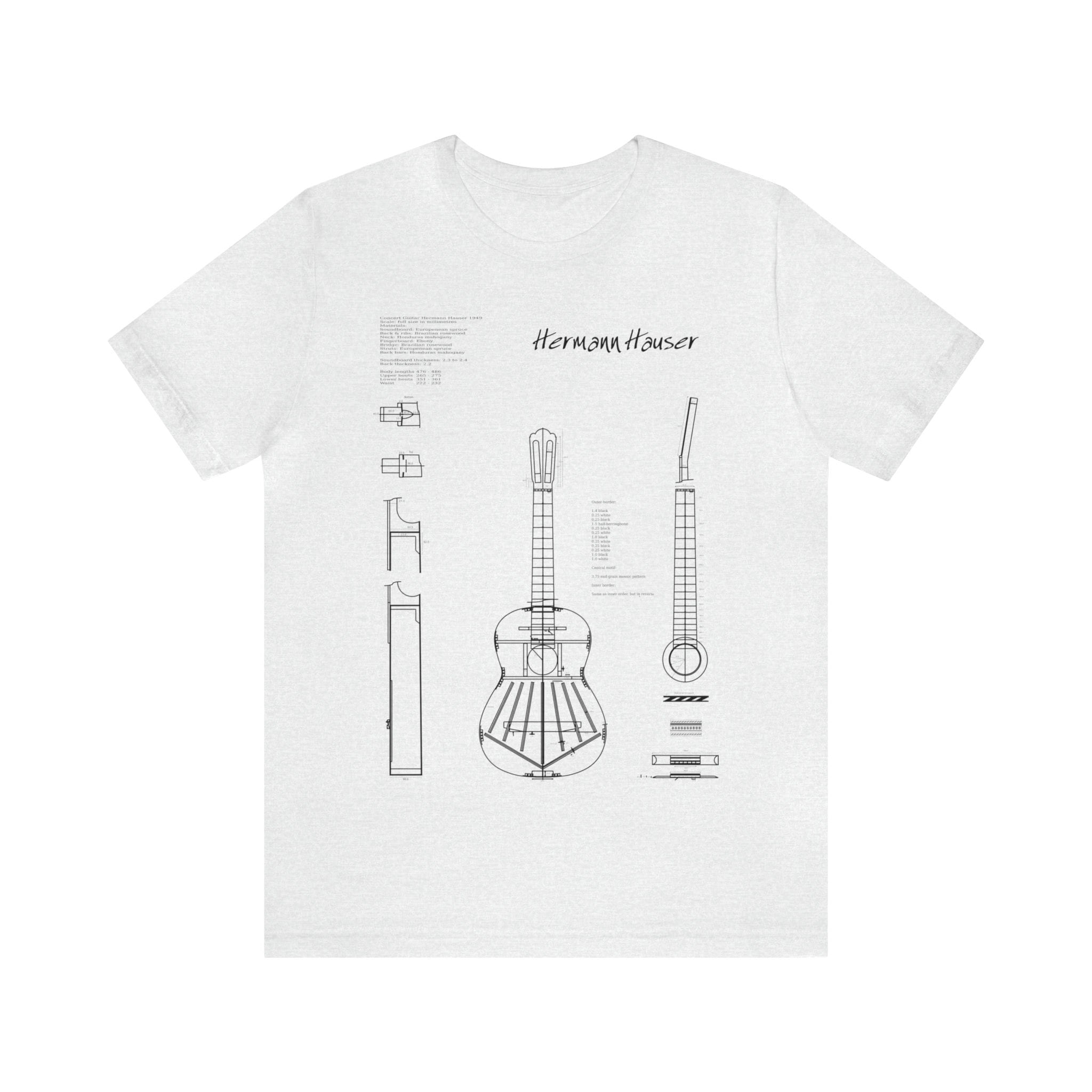Inside the method
The Pujol method appeared at a time when guitar teaching was not yet part of the instruments taught in conservatories (in France, the first guitar classes in the conservatories of Marseille and Boulogne date from the 60s). Guitarists needed landmarks to locate the instrument and a complete working tool that offered the student an opening on musical culture and other works, which could explain the abundance of text. The publication of the work in a bilingual version was probably intended by Pujol to reach a wider audience. This importance of the text is a marked feature of the method. Pujol accompanies the student with his presence, through a very rich text in which each idea constitutes a paragraph.
It seemed interesting to us to better understand Pujol’s path and to show the interaction of text and technical progression, to follow the trace of a fundamental technical principle: its initial statement and its path inside a volume and throughout the method.
The chosen technical principle relates to the importance of the simultaneous placement of several fingers on the neck and their maintenance until the next position and thus, the change of position 5.1. This principle is fundamental given that the guitar is a polyphonic instrument whose sound has a limited duration by the natural resonance of the strings but also by the action of the left hand which strongly conditions the sound result. Below the progression of work on this technical aspect is detailed. Its evolution will be followed throughout the four volumes; from the definition to its integration into instrumental play. Other technical aspects such as scales, thumb mobility or links are treated in parallel with the same type of progression.
Explanation and Introduction:
The seventh lesson of the second volume is an introduction to the left hand, starting with the explanation of the position, with supporting drawings, exercises for placement on a string (left hand only), and an exercise consisting of playing the C chord while holding it throughout the duration of the exercise.

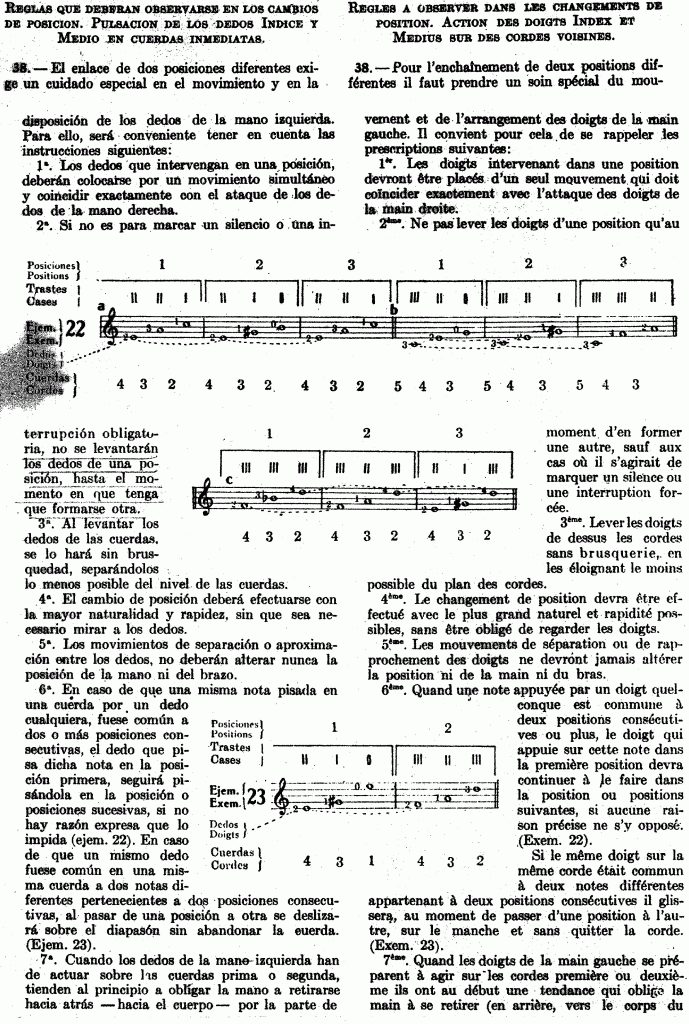
Pujol prepares the student from the beginning to perform multiple voices, chords, and arpeggios. Example 20 preceding the exercise presents with theoretical explanation, the position to be performed and the corresponding fingering; any potential problems and their solutions are raised (see paragraphs 34-36 of the same appendix).
Study of Position Changes:
Lesson 9 deals with the sequence of positions through a series of rules and an exercise for changing the left-hand position only. Separate hands work is usual in the early lessons, but it is rarely the subject of an entire lesson, which is the case here and shows the importance the author gives to these rules.
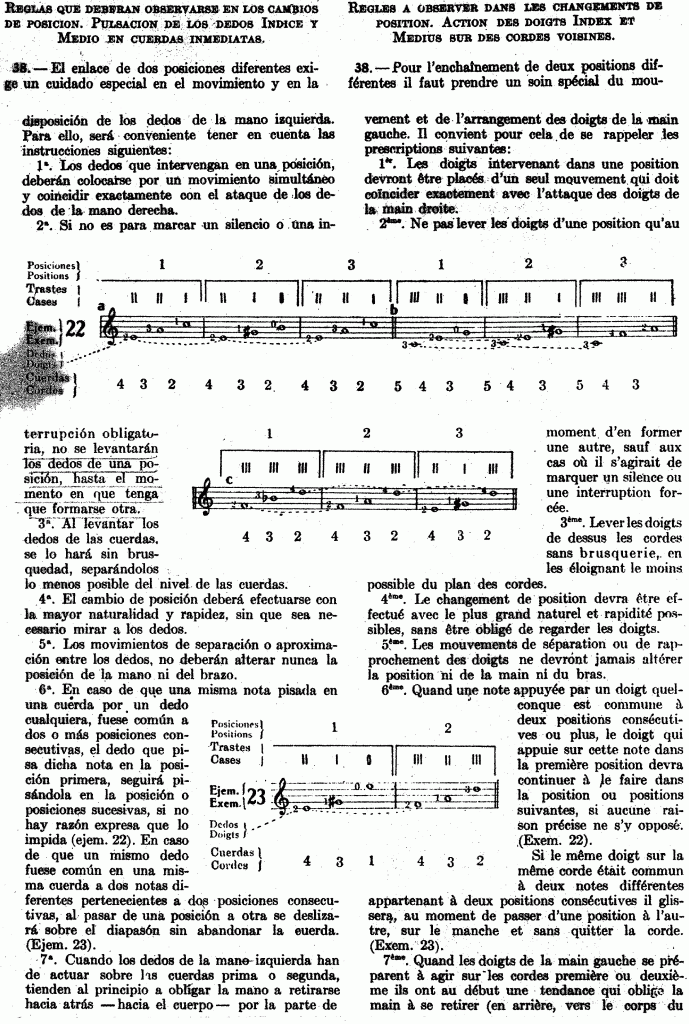
This is why this lesson is fully reproduced in the appendix. The statement contains principles that will be repeatedly emphasized (simultaneity, economy of movement, fingers common to two consecutive positions, anticipation of the gesture, non-interruption of sound in position changes).

Simple Changes in Music:
After these preparatory exercises for the left hand, there is a simple exercise with one position per measure that allows for anticipating the change of position by playing slowly.
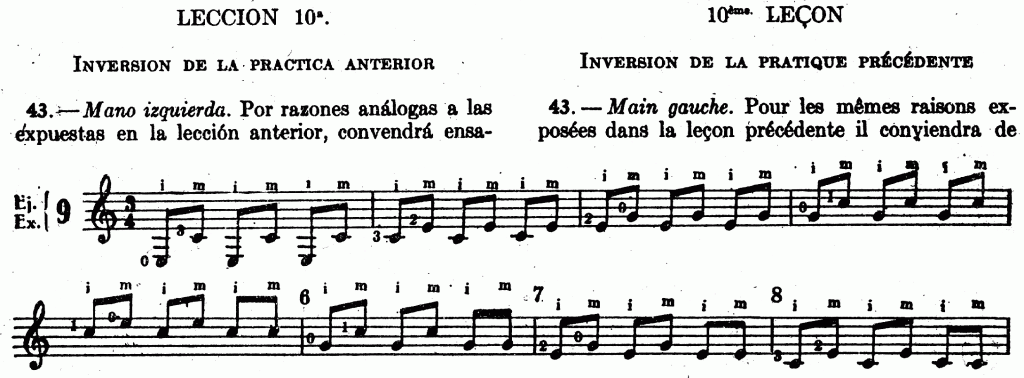
Lesson 12 involves arpeggio formulas for the right hand, reminding the principle of the left hand that was previously discussed, on an exercise that again has one position per measure. Pujol has therefore added a new element to the right hand without making the left hand more complex. The technical foundations are gradually and meticulously established (“the progressive order must not be altered because each exercise is the complement of the previous one and the preparation for the next one”).
Faster position changes:
With the appearance of chords (lessons 17-19), the author reminds that “the finger that presses on a string will not be lifted until it does not interfere with the execution of the next note”; for the following arpeggios, he reverses the process used in lesson 12: it is the right hand that keeps the same system and the left hand that will have to change position more quickly, that is to say there will be two positions per measure (“the fingers that must press the first two notes of each group will be placed at the same time”). Then (lesson 21), the same principles and left hand tips (“the first chord of two notes of each group of quavers should be considered as if it had to be produced with the bass note; the fingers will be placed simultaneously”) will be applied to a new right hand formula alternating the thumb and chords.
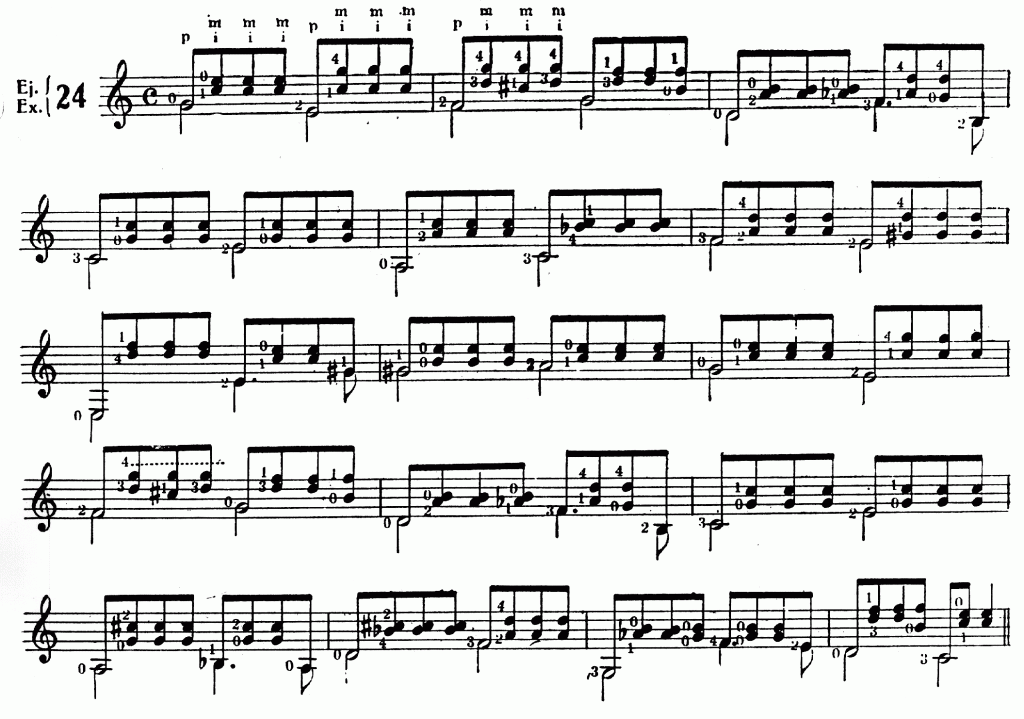
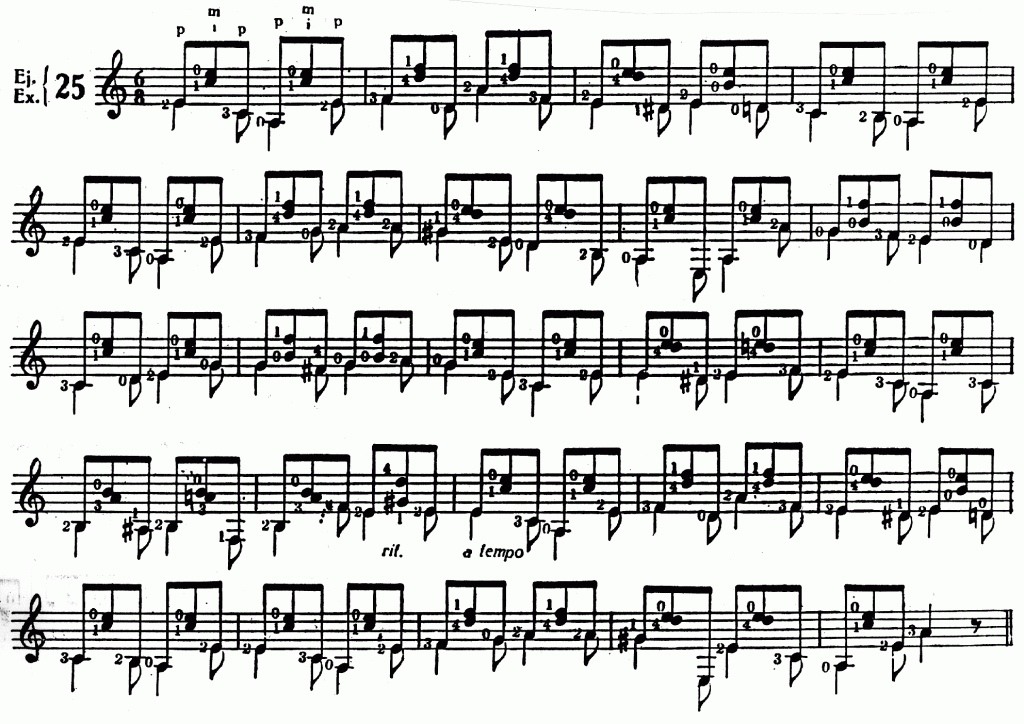
Thus, we see how the same principle is progressively applied and seen from different angles. We only retain in the text some lessons illustrating Pujol’s approach on this specific point, but each important technical principle is approached. Thus, in the second volume, each lesson contains indications for the left hand, for the right hand, and then practical performance tips. It can be seen from the examples in the appendix that there is a large amount of text in the second volume that contains the technical basics, then to a lesser extent in the third, and finally becoming quite succinct in the fourth. The text decreases as the student’s autonomy increases.
Towards a musical application:
From lesson 21, the exercises in this volume become longer and more elaborate. They can be considered as small studies rather than mechanism exercises where, “without forgetting the previous indications, the student will follow the indicated fingering”.
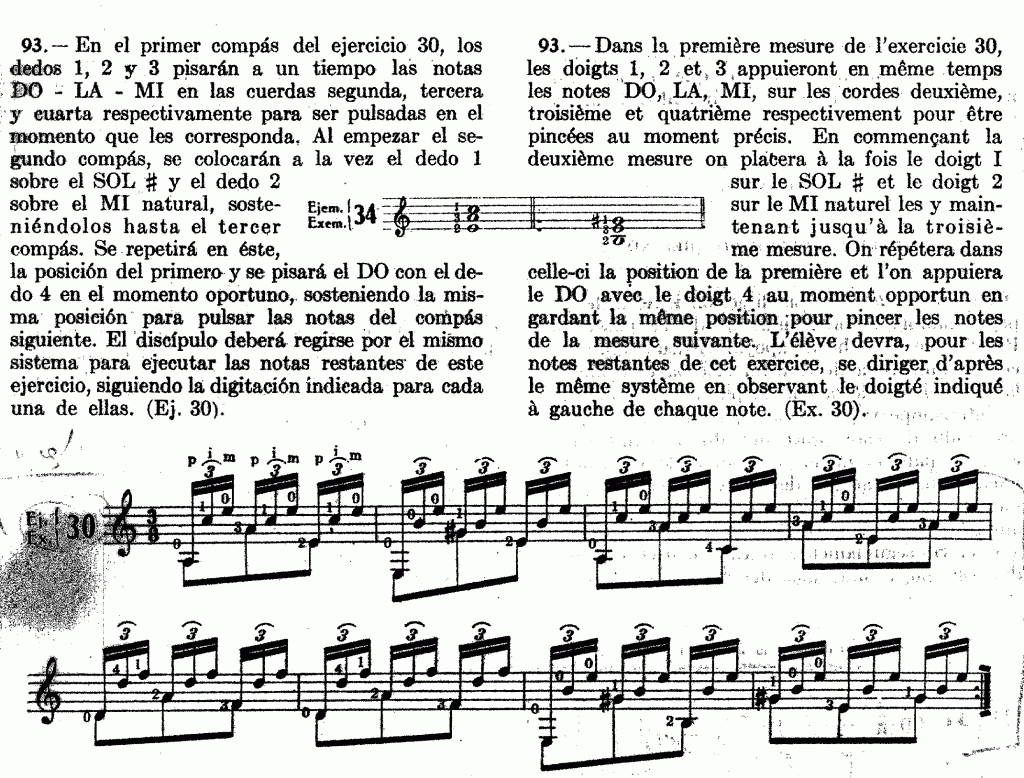
Exercise 30, of which only a few measures are reproduced is of a popular inspiration close to the malaguena; the accompanying indications illustrate the priority given here to fingering. Pujol emphasizes the importance of respecting the fingerings by paraphrasing the fingering indications in the text, which becomes heavy to read. Thus, the author seems to take charge of the student without relying on the work of the teacher; he explains this in the preface to the method (see “history and purpose of the method”). The next step will be to increase the speed of position changes. Here is an excerpt from exercise 80.

Pujol always emphasizes the conduct of the left hand to ensure that the sound does not interrupt in position changes. The technique has been enriched at this stage with the use of the right hand ring finger and barred chords. Exercise 82 one of the most important in the method, is a sort of choral offering multiple work possibilities; the numerous barred chords and pull-offs demand particular attention in the conduct of the left hand; this is why Pujol refers the student back to lesson 9.
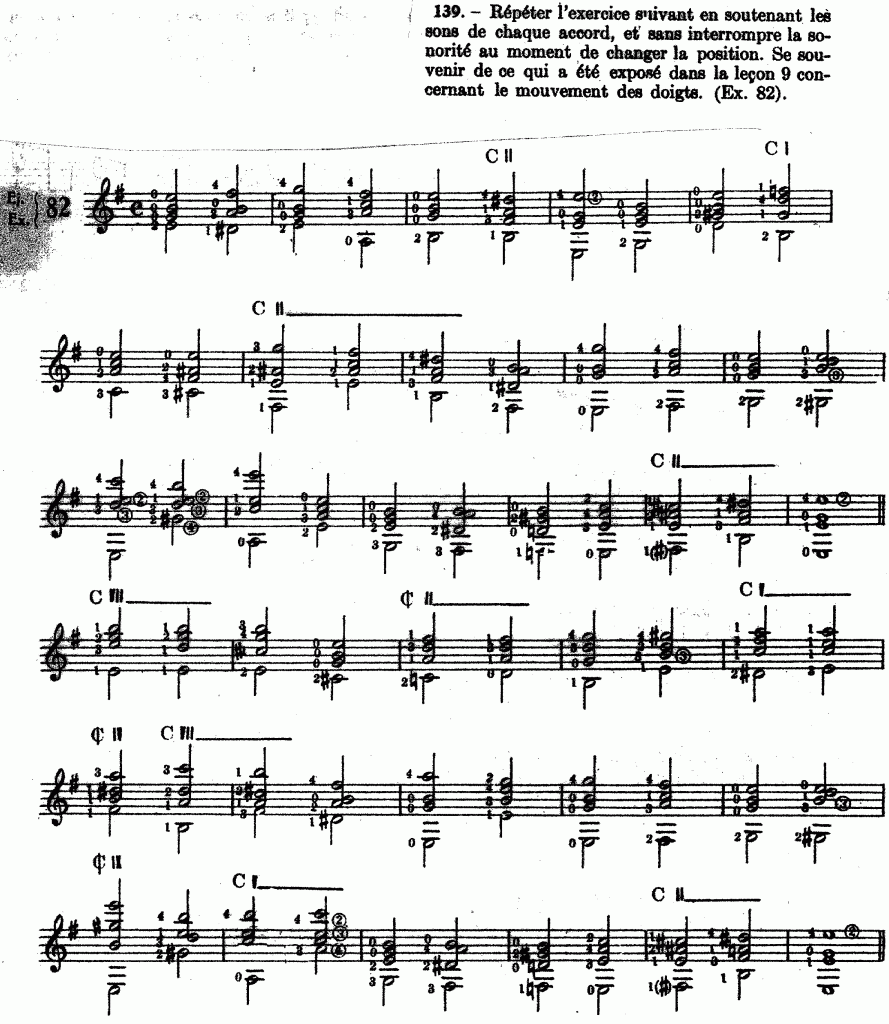
The studies at the end of the book are not explicitly related to the exercises. It can be said in general that compared to the exercises, they use the entire neck up to the twelfth fret.
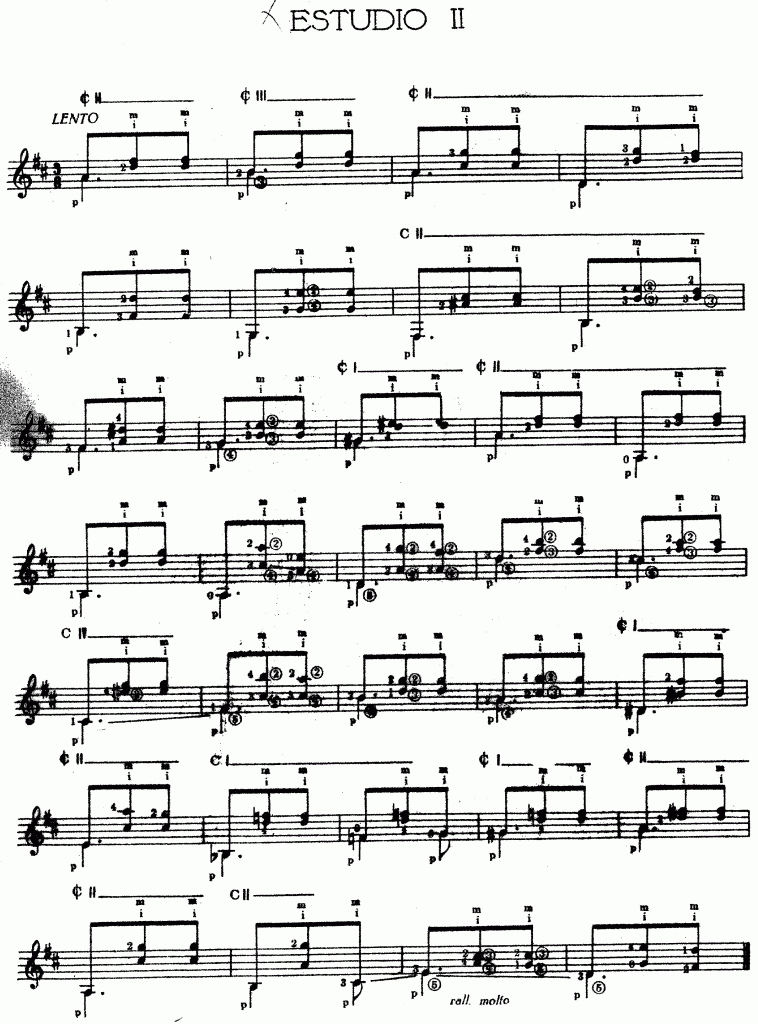
Combined with new challenges:
Following the trail of the principle of simultaneity of the fingers of the left hand in the third volume, we observe that it is now associated with the movement of the fingers along the neck in a horizontal direction. In addition to simultaneity, the changes in position become much faster and involve the flexibility of the arm which must guide the hand from the first to the twelfth fret. Thus, many exercises follow on chromatic or diatonic scales in thirds. The exercises proposed lack musical structure unlike those in the previous volume. From now on, several right hand fingerings will be used in the same exercise and it will often be requested to transpose.
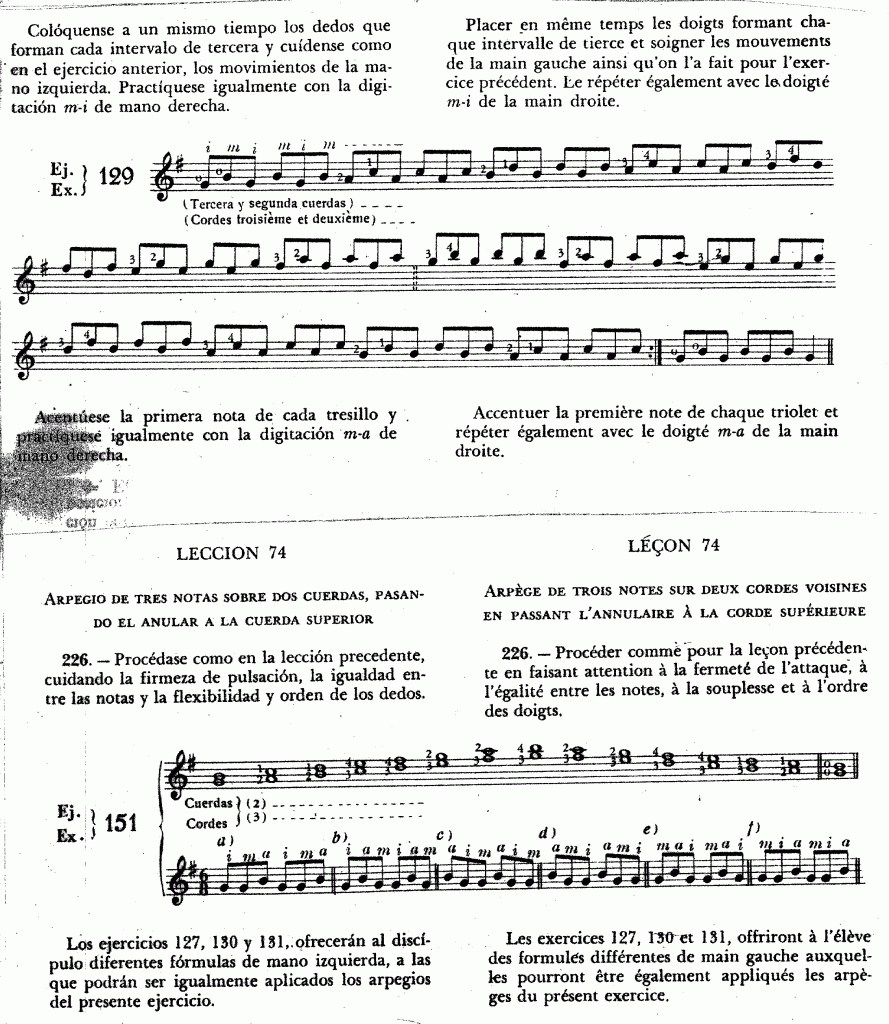
The lessons are generally shorter than in Volume II and references to previous paragraphs are common, both for recommendations already made earlier (the author assuming that there has been assimilation of the principle of simultaneity, he will only make occasional allusions), as well as to indicate to the student how to reuse material already seen, which lightens the text but obliges the reader to make back-and-forth movements. Compared to exercise 129 in , exercise 151, lesson 74, is built on the same scale; the text gives a working orientation. In fact, the emphasis is placed here on the right hand playing (three finger playing on two strings with different fingerings indicated using formulas) and on controlling sound quality paragraph 226. The material to be memorized is therefore reduced to a minimum to concentrate attention on the quality of the work. The presentation adopted in this exercise will be that of all similar exercises. It constitutes a gain in ease of deciphering and clarity.
Integration of technique into artistic work:
After some mechanical exercises, the author indicates at the end of the lesson, the supplementary study planned which is found at the end of the book, accompanied by a comment.

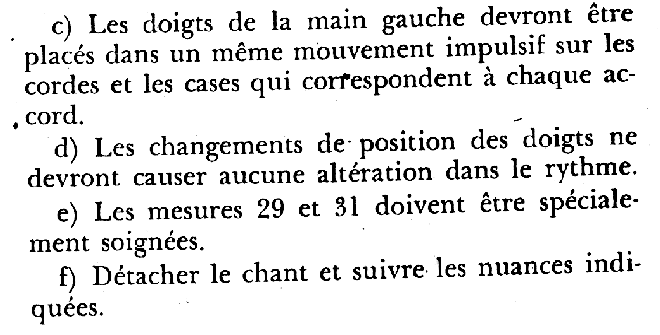
The studies are in this volume more numerous and ordered; some, including the “zortzico,” are very attractive in their rhythmic and melodic richness. Pujol defines them as an initiation into the repertoire. The following extract shows the importance that Pujol attaches to the simultaneous development of musicality and technique:
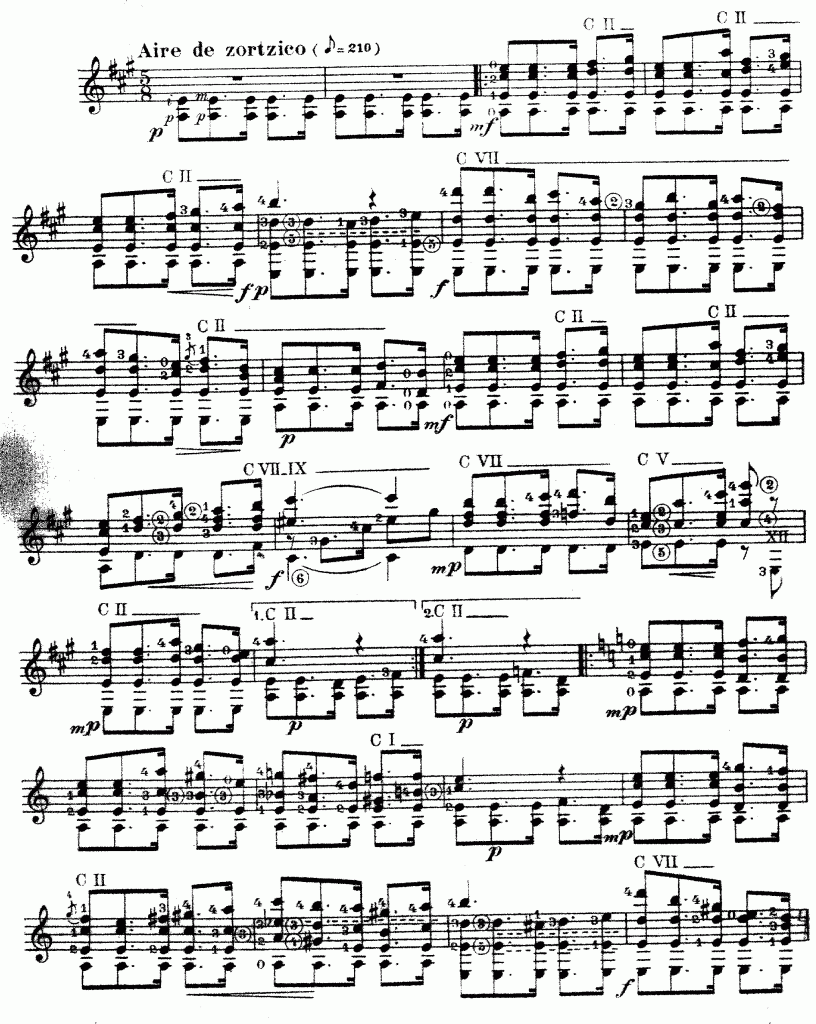
“These studies summarize in various musical forms, several aspects of guitar technique. They have the double purpose of overcoming the difficulties particular to each study, and affirming through their practice and mastery, the instrumental, musical and artistic sense that awakens and guides in the student’s mind, the interpretation abilities to guide them in the execution of their repertoire.”. Pujol establishes an order of priorities by privileging until the end of the third volume the exercises and studies (those of the method and those of the composers of the 19th century and the beginning of the 20th century, of which he cites some collections). He considers, like Tarrega, that to approach the repertoire works, it is necessary to be able to master the execution difficulties so as not to hinder interpretation.
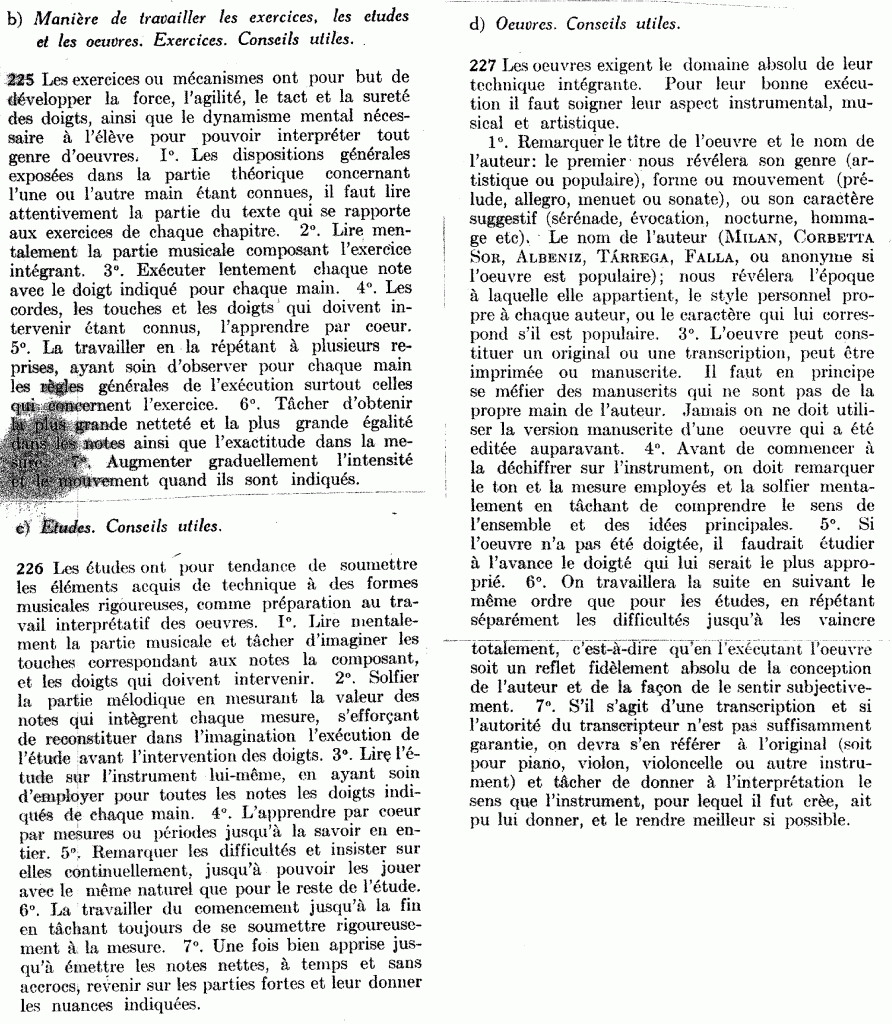
Pujol writes at the end of volume III; “The student will be able to prepare a repertoire of works by classical, romantic and modern authors whose difficulties are contained in the problems dealt with so far.”
Maintenance of Acquired Skills:
Pujol defines the fourth volume as follows: “The fourth book, both declarative and dynamic, is above all a working tool” 5.8. The uniqueness of this volume lies in the use of mnemonic formulas that simplify reading (horizontal lines represent the strings; numbers indicate the case number which is equal to the finger number).
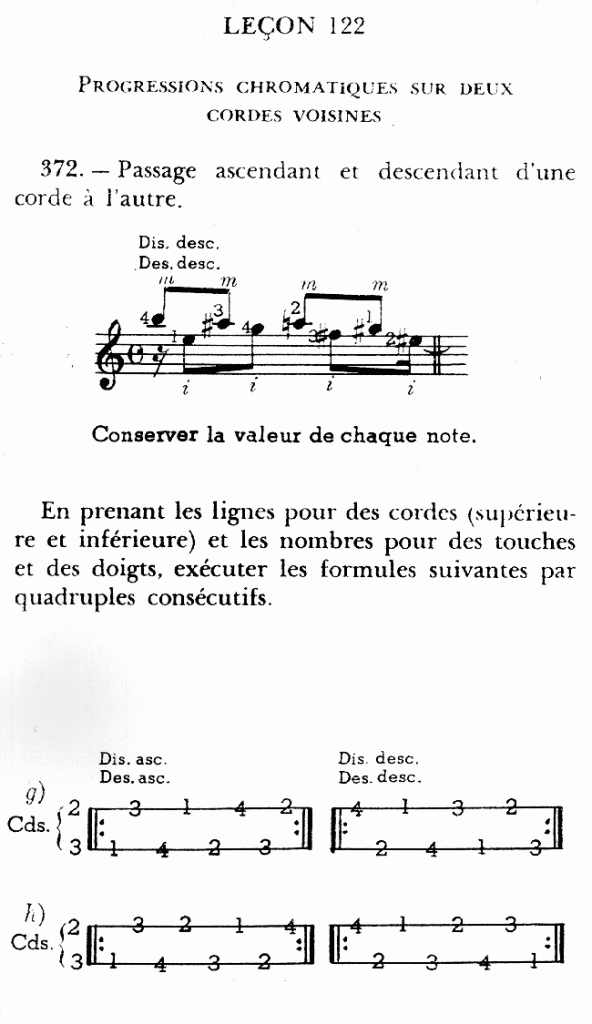
The formulas are reduced to a minimum (often taking up only one measure); different tempi and rhythms are proposed. It is up to the student to choose from this “memento,” the most useful exercise: “We recommend to the person who undertakes the study of a work and who finds a difficult passage to master, to work on it isolated or to seek in the similar formulas of this book the material that will allow him to overcome it”.

The study whose excerpt appears in the appendix: “Le petit ruisseau” requires a very good mastery of the left hand through two-voice parallel writing; exercises 259 to 264 deal only with finger independence. For the guitarist, this volume serves to maintain technique without “tiring” the pieces of repertoire.
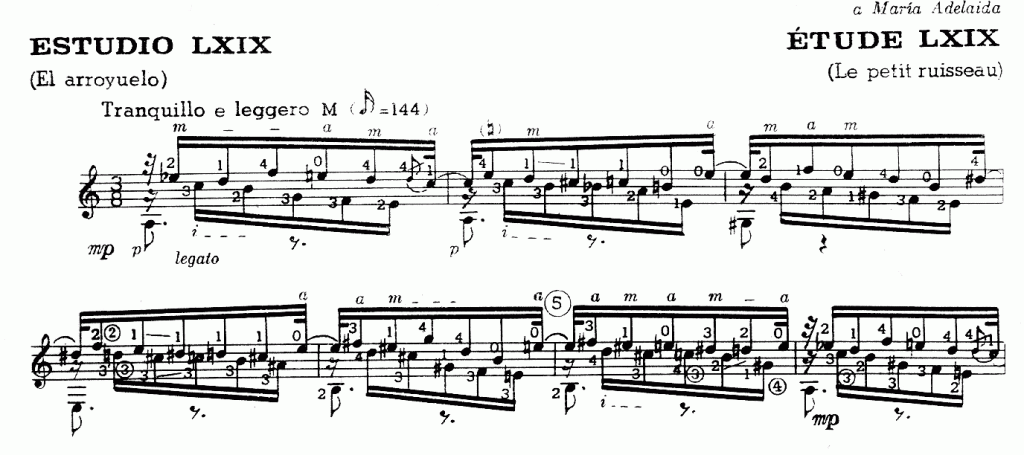
At the end of each lesson, the author refers to works containing the element studied (Villa-Lobos, Albeniz, Llobet, Sor, Aguado, Pujol). In this volume, Pujol also covers subjects such as phrasing, finger logic, or concert guitar.
Classical Guitar
